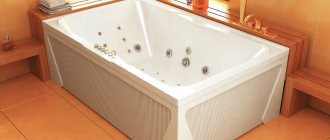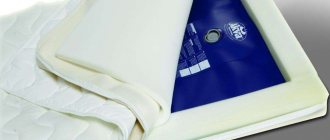Regeneration of silica gel in industry
The widespread use of synthetic adsorbents for drying rooms, gases, as desiccant absorbers during the storage of various products, as well as for deep drying and purification of various organic substances, oils, and refrigerant oil mixtures is more economical with the repeated use of regenerated adsorbents.
If you use silica gel, this material should be replaced regularly.
Regeneration is the process of restoring the working properties of the adsorbent (in this case, silica gel) after using it for drying or cleaning.
Regeneration includes two stages:
1. Desorption is the reverse process of adsorption, i.e. removal of adsorbent from the adsorbent.
2. Cooling of the adsorbent after desorption.
It should be noted that the regeneration process is a very important stage, because largely determines the economics of separation and purification of gas and liquid mixtures (approximately 60-70% of all energy costs occur at the regeneration stage). The degree of drying or purification of gases and liquids largely depends on how effectively the regeneration was carried out.
rice. 1 Dependence of the depth of gas drying with fine-porous silica gel KSM-5 (residual humidity c) on regeneration conditions (t, W)
Depending on the purpose for which the silica gel was used, the choice of the desorption stage depends. When using silica gel as a desiccant for drying rooms, gases, and storing various products, desorption consists of dehydrating silica gel soaked in moisture. The drying depth depends, first of all, on the regeneration temperature, and at low temperatures - on the humidity of the purge gas W (Fig. 1). The curves corresponding to different humidity of the purge gas (from 1000 to 21500 ppm) are exponential character and residual moisture content as the regeneration temperature increases asymptotically tends to a certain limiting value (10 parts per 1 million). This value of moisture concentration in the vapor phase apparently corresponds to the complete removal of physically adsorbed water from the pores of silica gel. At regeneration temperatures above 1600C, complete regeneration of silica gel is achieved regardless of the humidity of the purge gas.
The degree of drying of gases with silica gels is determined on the basis of a diagram constructed taking into account adsorption isotherms (Fig. 2).
rice. 2 Diagram for determining the residual moisture content in the gas after drying with fine-pored silica gel, taking into account the regeneration conditions (temperature and humidity of the purge gas)
Let's give an example of using the diagram. Let the silica gel be heated to 1350C during regeneration as a result of blowing with a moist gas in which the moisture concentration is 1000 parts. by 1 million We draw a perpendicular with = 1∙103 parts. by 1 million until the intersection with the 1350C isotherm. The moisture content in the adsorbent after regeneration is determined on the ordinate axis in accordance with the position of the intersection point. It is equal to about 1% (mass.). In turn, the intersection points of the line of constant moisture content of silica gel with the curves 25 and 500C allow us to obtain on the abscissa axis the values of the residual moisture content in the gas at the drying stage: 11 parts. per 1 million at 250C and 28 parts. per 1 million at 500C.
If silica gel was used for drying and purification of various organic substances, such as freons, various oils, oil-refrigerant mixtures, etc., then the repeated use of adsorbents, first of all, requires the removal of the components of the purified medium from the outer surface and from the volume of secondary pores of the adsorbent granules before thermal processing. In this case, the regeneration stage can be carried out in several stages; Various methods for removing adsorbed substances from the surface are added to the heat treatment of silica gels. The choice of a suitable regeneration method will depend on the environment in which the silica gel was working. If for highly volatile substances, such as refrigerants and organic solvents, this does not cause significant technological difficulties and their removal is easily carried out by vacuuming or blowing, then when removing highly viscous substances, such as oils, significant difficulties arise. The oil remaining on the outer surface and in the secondary porous structure of the granules becomes coked during thermal desorption. This process is accompanied by the combustion process. As a result, the activity of the adsorbent decreases and the adsorption kinetics worsens.
Methods for removing adsorbed substances from the surface of an adsorbent are varied: firing in an oxidizing environment, blowing with water vapor, washing with a solvent. During firing, the adsorbent is blown with air at temperatures up to 2000C and the bulk of the oil flows off the adsorbent without ignition. Then the regeneration temperature is raised to 500-6000C. Thermal desorption is associated with oil loss and can be accompanied by changes in the molecules of released substances due to catalytic transformations at elevated temperatures, causing the accumulation of coke-like products and resins in the porous structure of the adsorbent.
When regenerating adsorbents after drying highly volatile organic substances (for example, carbon tetrachloride, freons, etc.), before heat treatment, purging with an inert gas is carried out at a temperature usually no more than 80-900C. When used silica gel is regenerated with a hot solution of calcined salt with various surfactants, the oil is released from the adsorbent and floats to the top. The silica gel thus treated is dried with hot air.
Washing adsorbed oils with solvents (for example, gasoline, acetone, etc.) is a more advanced process. Since the use of these solvents is associated with an increased fire and explosion hazard, it is more advisable to use non-flammable solvents for cleaning, for example, trichlorethylene or freons.
rice. 3 reduction in the activity of silica gels
Desorption processes can be carried out periodically (in devices with a fixed layer of sorbent) and continuously (in devices with a moving layer of adsorbent) in adsorbers. Moreover, the latter have found limited use. To create a continuous process, blocks of adsorbers are used, in which each adsorber consists of one cycle or another (adsorption, desorption, drying and cooling). Such blocks can be four-, three- and two-sorber.
During the operation of adsorption plants, the adsorption capacity of silica gels decreases. This is explained by the fact that as a result of multiple repetitions of alternating cycles of adsorption and desorption, a decrease in the active adsorbing surface of the absorber occurs, caused by mechanical abrasion of sorbent particles, cracking, dusting and destruction, and poisoning of the sorbent by impurities that are not removed during desorption.
Figure 3 shows a generalized dependence of the decrease over time in the relative static activity of silica gels, constructed on the basis of experimental data.
The static activity of all dryers decreases with increasing adsorption operating temperature. Zeolites are subject to this effect to a lesser extent than silica gels, the static activity of which is significantly affected by the process temperature (Table 1)
Table 1
| Working temperature round of processes, 0C | 20 | 25 | 30 | 35 | 40 | 45 | 50 | 55 |
| Relative static activity, % | 100 | 97,1 | 93,9 | 89,7 | 84,7 | 79,1 | 71,3 | 57,1 |
The calculated static activity of the silica gel should be such that an economical service life of the absorber can be obtained. Taking into account the data in Fig. 3 and Table 1, the calculated activity of the adsorbent should not exceed 60% of the passport data of commercial absorbers. Usually in design calculations it is assumed that the static moisture activity of silica gel is 7-9 kg H2O / 100 kg of desiccant. Under normal operating conditions, the economical service life of silica gel is 1 to 3 years.
Literature:
1. Keltsev N.V. “Fundamentals of adsorption technology”, M., CHEMISTRY, 1984.
2. Malkin L.Sh., Kolin V.L. “Drying and cleaning of small refrigeration machines”, M., Light and food industry 1982.
What is silica gel?
The spherical granules, packaged in small bags, are often found in boxes of new shoes. This substance – silica gel – is an excellent adsorbent.
The technology for its production is the drying of a gel of supersaturated solutions of silicic acids; it consists of small-diameter grains (they are also called granules). The color of the dry matter is transparent or matte; sometimes colored grains are added, which act as a moisture indicator.
Crystals come in different sizes - small and larger. Small grains are used for drying lightly and moderately damp things and air; large grains are mainly used in industry for drying air and equipment. Now it is clear what silica gel is and where it is used, how it works - we will consider further.
Drying rules
When drying the sorbent, you must adhere to the following rules:
- Strictly observe the temperature regime. It is worth remembering: if you increase the temperature or processing time, this will cause the silica gel to lose its moisture-absorbing properties.
- It is necessary to stir the substance periodically.
- Open fire must not be used.
- The drying time of the product depends on its thickness.
The person performing material regeneration must wear safety glasses and gloves.
Reusing silica gel has become a cost-effective method. After all, drying the product greatly increases its service life.
Prevent your headphones from smelling
Patrick Allen / Lifehacker.com
Your body has a certain temperature, so you shouldn't be surprised when your headphones remain warm after you take them out of your ears and put them in your bag. And if the surrounding space contains a lot of moisture, this provokes the growth of bacteria and the appearance of an unpleasant odor. To avoid this, just place a packet of silica gel near the accessory.
Regeneration plants
The modern market offers many different units for regenerating silica gel. The most popular settings are:
- In industrial organizations, special equipment is used to regenerate the sorbent. Most often, the machines consist of a pump pumping air inside, a cast iron barrel and a furnace with a constant temperature of 200–250 degrees Celsius. The substance is placed in a tank in which air heated in the oven acts on the silica gel. As a result of prolonged exposure, the product restores its absorbent properties.
- Another option for a drying unit would be an installation that includes: electric spirals;
- cleaning structures;
- temperature sensors;
- air pump;
- needle valve;
- humidity sensor;
- gearbox
The principle of operation remains the same, but instead of a furnace, the air is heated by electric coils. Among the advantages of this design are constant temperature control and automatic humidity control.
- It is more convenient to use regeneration and sorbent preparation units. The equipment does not require special installation and does not take up much space, so it can be used both in production and at home. BRPS installations not only cope with the task in a short time, but also do not damage the silica gel. The fact is that light steam is used instead of hot air. It warms up faster and acts on the material longer. This reduces the load on the electrical system and the sorbent itself. Thanks to this, the substance lasts many times longer.
- Another way to dry the sorbent is to place it in the oven. It is important to ensure a constant supply of air, otherwise the substance will simply stick to the baking sheet. It is best to dry at a temperature of 120–150 degrees Celsius. Although this method will take longer, it will provide the best quality silica gel regeneration at home.
Keep tools dry and protected from corrosion
Shutterstock
Most likely, you will say that you follow the rules for storing tools and keep them in a place with a stable climate, but this is difficult to believe. Even the most responsible craftsmen periodically leave various accessories outside in the rain. And if the garage or basement is constantly damp, the problem only gets worse. To protect your equipment from corrosion, just put bags of silica gel in the box where it is located. This life hack will save them from rust and premature wear.
How to repair a double-glazed window with your own hands
To do this, use a sharp chisel and hammer to remove the glazing beads.
how to remove bead
from the window profile and carefully remove the glass unit. Find the place of depressurization, clear it to the spacer frame,
dry the glass unit with a regular hairdryer and cover this area with sealant.
To do this, you can use any high-quality sealant (car sealant, for example).
Restoring air circulation
We take a grill of a suitable size and color. In this particular case, one part of the door ventilation grill was used. After taking measurements (so as not to miss), we apply the grille to the window sill board and trace it around the perimeter with a pencil (photo 9).
Drill a small hole d about 10 mm. or slightly larger than the width of the saw blade of an electric jigsaw and cut out a seat for the grille.
When installing the ventilation grille in place, be careful that the partitions in it must be positioned in such a way that the air flow from the radiator goes to the window.
ventilation grille in the window sill
Eliminate musty smell from books
adistock/Shutterstock
If your library has a lot of old books that give off an unpleasant odor, simply place them in a container with a few packets of silica gel. The main thing is to make sure that the packages do not come into contact with the paper sheets, and then move the box of literature to a dark place for about a month (this is what the experts at Abundant Genealogy recommend). If the smell persists, update your packages.











